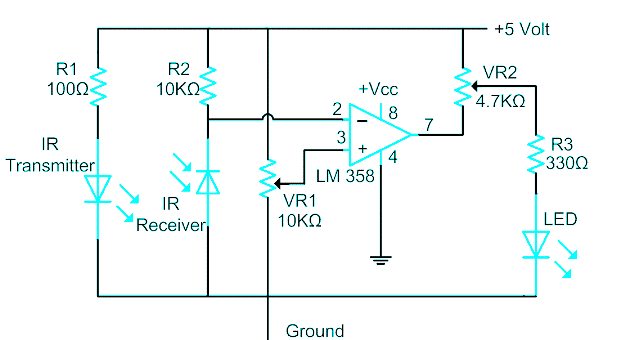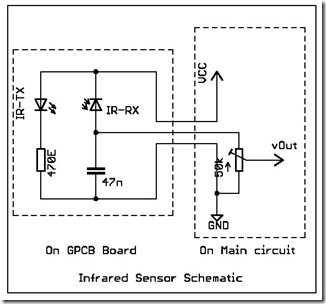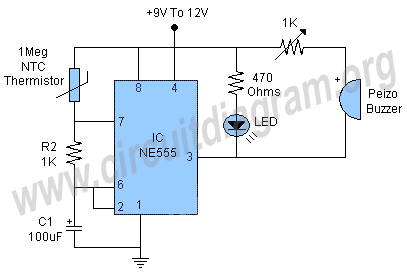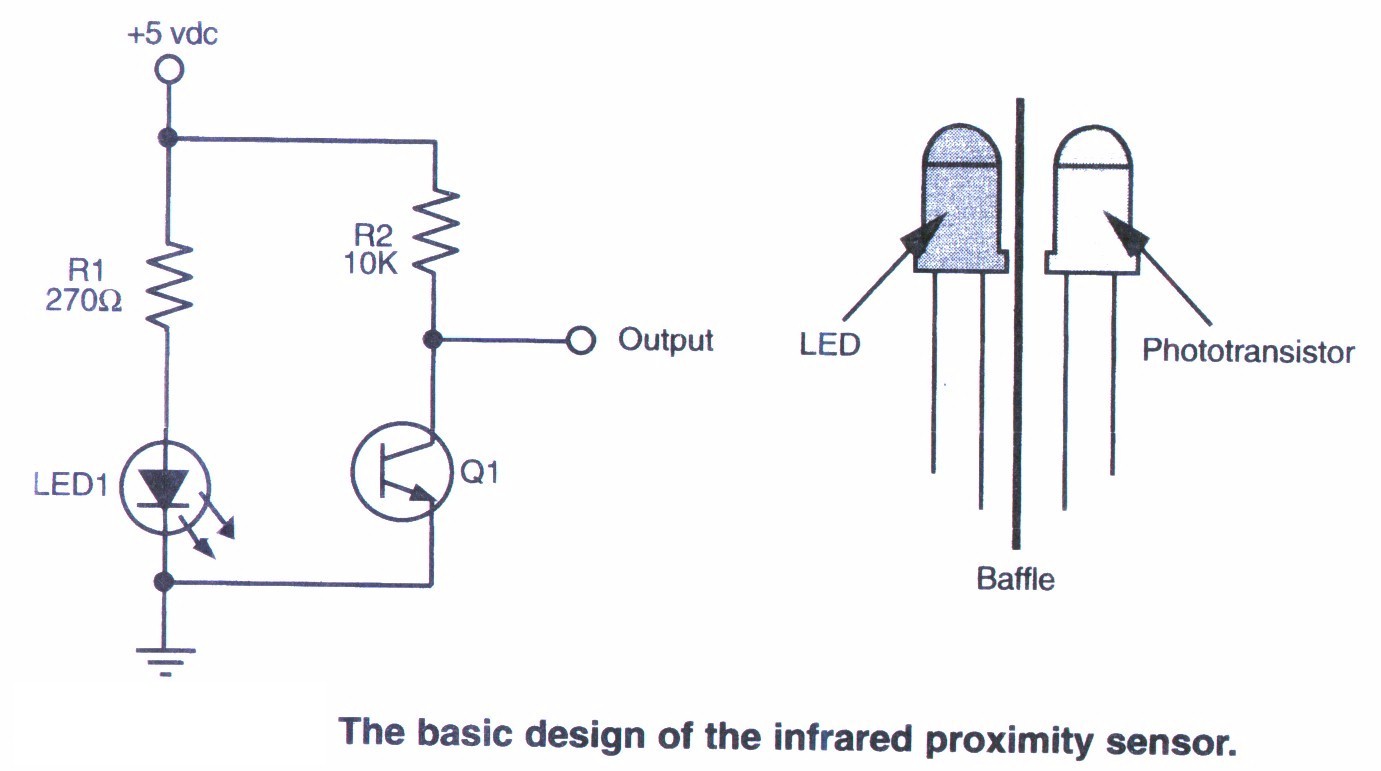
infrared ir sensor

This circuit is one of the most basic and popular sensor modules. In electronics, this sensor is analogous to human visual senses and can be used.
The described sensor module serves as a fundamental component in various electronic applications, emulating the visual capabilities of human perception. It typically consists of a light-dependent resistor (LDR) or phototransistor that detects light intensity. The output of the sensor varies based on the amount of light falling on its surface, making it suitable for a range of applications such as automatic lighting systems, ambient light detection, and even simple robotics for obstacle avoidance.
The basic schematic of this sensor module includes a power supply, the sensor element (LDR or phototransistor), and a microcontroller or comparator circuit to process the sensor's output. The LDR is connected in a voltage divider configuration with a fixed resistor, allowing the voltage across the LDR to change with light intensity. This voltage can be read by an analog input pin of a microcontroller, which can then interpret the data and trigger actions such as turning on or off an LED or adjusting the brightness of a display.
In practical applications, the sensor module can be integrated into larger systems, such as smart home devices, where it can communicate with other components via protocols like I2C or SPI. The versatility of this sensor makes it a popular choice for both educational projects and professional designs, providing a straightforward way to incorporate light sensing capabilities into electronic systems.SUMMARY This circuit is one of the most basic and popular sensor modules. In electronics, this sensor is analogous to human s visionary senses which can be used.. 🔗 External reference
The described sensor module serves as a fundamental component in various electronic applications, emulating the visual capabilities of human perception. It typically consists of a light-dependent resistor (LDR) or phototransistor that detects light intensity. The output of the sensor varies based on the amount of light falling on its surface, making it suitable for a range of applications such as automatic lighting systems, ambient light detection, and even simple robotics for obstacle avoidance.
The basic schematic of this sensor module includes a power supply, the sensor element (LDR or phototransistor), and a microcontroller or comparator circuit to process the sensor's output. The LDR is connected in a voltage divider configuration with a fixed resistor, allowing the voltage across the LDR to change with light intensity. This voltage can be read by an analog input pin of a microcontroller, which can then interpret the data and trigger actions such as turning on or off an LED or adjusting the brightness of a display.
In practical applications, the sensor module can be integrated into larger systems, such as smart home devices, where it can communicate with other components via protocols like I2C or SPI. The versatility of this sensor makes it a popular choice for both educational projects and professional designs, providing a straightforward way to incorporate light sensing capabilities into electronic systems.SUMMARY This circuit is one of the most basic and popular sensor modules. In electronics, this sensor is analogous to human s visionary senses which can be used.. 🔗 External reference





